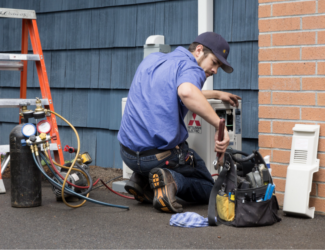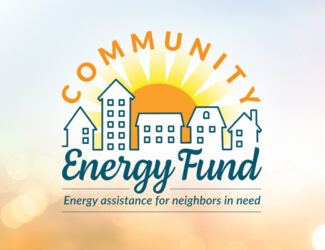
Storm restoration
How does the PUD decide which outage jobs to do first?
- First, the utility focuses on outages at the higher-voltage transmission level, which affect substations that serve large numbers of customers, hospitals, schools and businesses.
- Oil spills from transformers, wires blocking main highways and wires down on buildings or vehicles get high priority based on the safety hazards they present.
- Next to be restored are substation main line circuits that serve neighborhoods and/or businesses.
- Smaller outages are then addressed. These may be caused by transformer malfunctions or fallen service lines and may serve one or just a few homes.
- Finally outages impacting non-essential street lights are resolved.
Frequently asked questions about outages and power restoration
Why is my power out but my neighbor still has electricity?
This could be a result of one of the following:
- Your home may be served off a different PUD distribution circuit than your neighbor’s home. If this is the case, the circuit serving your neighbor’s home is working as it should, while the circuit serving your home has sustained an outage. This process is similar to when you have a breaker trip or blown fuse at home. The home’s circuit that has the blown fuse or switch will be without power, while the rest of your home will still have power since it is being served by another circuit(s).
- Your home may have damage to your overhead service. Sometimes during storms there can be damage to your weatherhead (roof-mounted pole structure) where the electric service comes into the house. Your weatherhead belongs to you, so if it is damaged and in need of repair, it is your responsibility to get a licensed electrician to fix it before the PUD can legally restore power. Once necessary repairs are completed, the PUD will send a serviceman to make permanent connections and restore power.
- The transformer serving your home may be out of service following an outage restoration if too much electrical load is placed on the transformer when power is restored. When power is restored by the PUD after a storm, electrical appliances and heat in homes also start up. When this occurs all at once, service lines and transformers serving individual houses can become overloaded and can cause an outage. It is important for customers to remember to turn off electric stoves and burners, as well as other electrical devices that can be dangerous if unattended when the power is restored. In fact, turn off as much electrical load potential as possible — just keeping a light bulb or two on to let you know when power is back. This ensures your transformer and the electrical lines serving your neighborhood won’t become overloaded and cause a second outage when power is restored.
How do I get details on an outage?
Our outage map has the most recent information, including an outage tracker that shows you progress during an outage repair. Customers can also sign up for outage text alerts when they report their outage through our outage map or through our self-service phone system (425-783-1001). Just click the box to opt-in to outage text alerts and we’ll keep you informed on restoration progress.
Do emergency safety issues impact storm restoration? What if I have a wire down on my property? Will a crew respond faster?
The PUD gives high priority to emergency situations such as a life in danger. In cases when wires are down, are visibly burning, or are part of a higher voltage primary line, the repairs will receive higher priority. In cases when service lines (going directly to a home) are down on a resident’s property, the PUD will make the repair as soon as possible after main or primary lines are restored. However, in a large storm, the PUD may have hundreds of primary and service lines down throughout its service territory. Customers should always stay away from these lines – and always assume they are live. Telephone and TV lines can also pose a hazard especially if they are wrapped up with the power lines. Customers should call the PUD at 425-783-1001 to report downed lines, so that the utility can assign a crew to perform the needed repairs. If PUD phone lines are overwhelmed, they can also call 911 to report life-threatening situations. 911 dispatchers have direct communication links to the PUD.
Should customers report all power outages?
If your power does go out and your house is the only one in your neighborhood affected, please report the outage on our outage map or call our automated power outage line (425-783-1001, 24 hours a day, 7 days a week). If houses around you are without power, rest assured that we’re working to restore service as soon as possible. However, if your power is still out after 24 hours, please report it via the outage map or outage line.
Should I unplug sensitive electronic equipment during a power outage?
Yes. These types of electronics do not handle power surges well, and the return of power after an outage may entail a brief surge of power. In fact, during a power outage, you should also turn off any electric item that was on before the outage except for one light so you know when power is restored. Not only does this protect your appliances, it eases the electrical demand when power is restored.
Why doesn't the PUD put all of its lines underground so they're protected during storms?
About 40 percent of the PUD’s lines are underground. Many customers and communities prefer this option because it provides an uncluttered appearance to a neighborhood and reduces the number of tree-related power outages. However, underground systems are much more expensive to construct and must be paid for by the developer or customers who benefit.
The PUD estimates that, depending on terrain, voltage and current-carrying capacity of a power line, it can cost as much as three times more to install an underground power line than an overhead power line of the same distance. The difference in cost can be as much as $1.5 million more per mile for a new distribution feeder line.
Also, while underground systems are protected from falling trees in wind storms, they have their own set of problems, such as failures caused by overheating, flooding and corrosion, and by careless digging. Moreover, repairs to an underground line are much more difficult and time-consuming than they are for an overhead power line.
Underground lines are an option that many homeowners, developers and communities choose. Many communities have requirements dictating that any new developments are designed with underground lines. The developers must bear the cost of placing the lines underground. In the case of a homeowner or a neighborhood opting to convert from overhead lines to an underground system, they, too, are responsible for the cost of placing power lines underground.
What storm-damaged equipment belongs to the utility – and what belongs to the customer?
Customers sometimes ask who is responsible for maintaining and repairing the equipment that provides electricity to their homes. The customer/owner is responsible for installing, maintaining and repairing all equipment beyond the service connection point except for the electric meter. For specifics, please see the informational sheets attached below.






